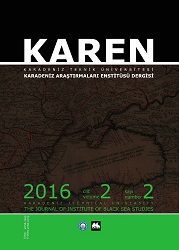Temporal and Spatial Arrangements in Serkan Türk’s Postmortem Narrative: “I Didn’t Cry When I Died”
Temporal and Spatial Arrangements in Serkan Türk’s Postmortem Narrative: “I Didn’t Cry When I Died”
Author(s): Mustafa Zeki Çıraklı, Öznur YEMEZSubject(s): Language and Literature Studies, Turkish Literature
Published by: Karadeniz Teknik Üniversitesi - Karadeniz Araştırmaları Enstitüsü
Keywords: Narrator-Focalizer; Postmortem Narrative; Temporal and Spatial Arrangements; Narrative Levels
Summary/Abstract: Serkan Türk’s fiction represents a new generation of storytelling bringing together universal themes as well as local issues. He bears a considerable position in modern Turkish storytelling as having employed modernist narrative techniques. This study explores narrative technique in Serkan Türk’s postmortem narrative, “I Didn’t Cry When I Died” and argues that the author plays with a temporality incorporating temporal and spatial elements through the representation of the consciousness of the protagonist, who is also the first person narrator and internal focalizer in the story. It is shown that shifts between temporal and spatial axis help to reveal the character’s past and present, her intellectual and physical condition, and her resistance to nonexistence.
Journal: Karadeniz Araştırmaları Enstitüsü Dergisi
- Issue Year: 2/2016
- Issue No: 2
- Page Range: 79-94
- Page Count: 16
- Language: English

